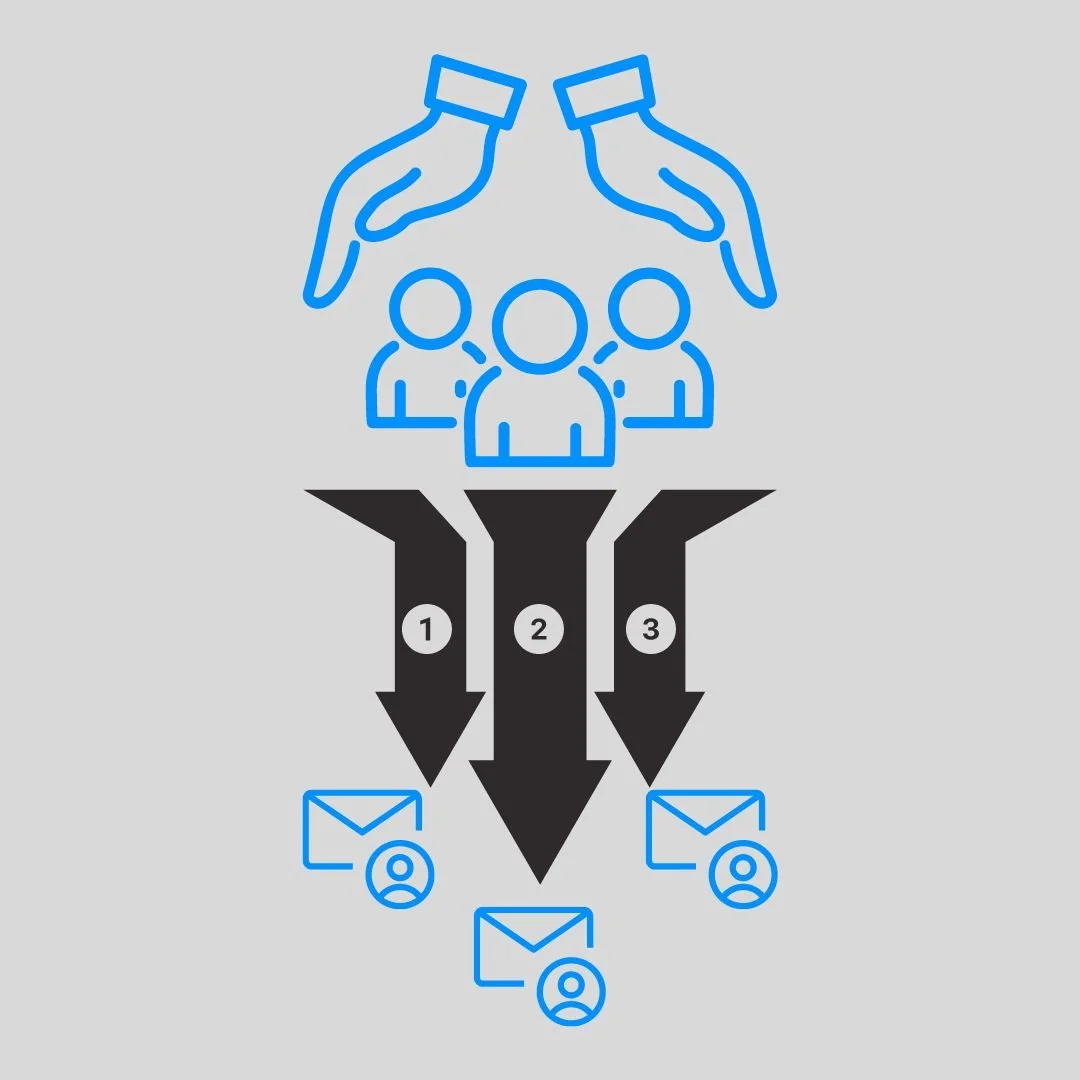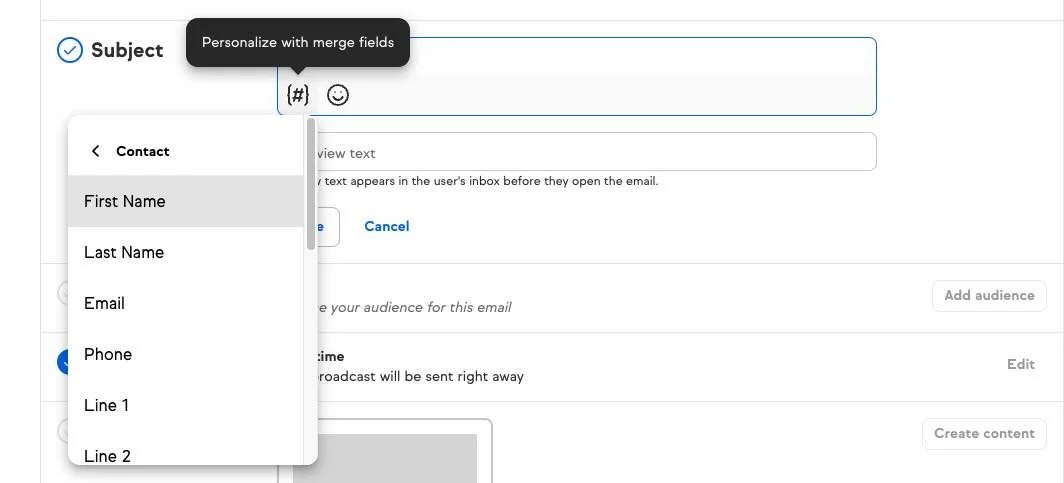Effective Email Marketing Strategies: Unlocking the Power of Direct Communication
Effective email marketing strategies are pivotal in today’s digital landscape, especially for businesses aiming to engage subscribers and drive conversions. Despite many of the negative views that individuals have when it comes to email marketing, it remains a highly effective tool for building relationships, increasing brand awareness, and boosting sales.
When executed correctly, email marketing can transform your business by fostering meaningful connections with your subscribers and driving significant conversions. This article will explore the best practices for email campaigns, emphasizing the importance of email automation, personalized emails, and email segmentation.
What Is Email Marketing?
Email marketing is a digital marketing strategy that involves sending strategic emails to prospects as well as current customers to promote products or services, share valuable content, and share updates. All with the purpose of building new relationships AND continuing to develop and deepen current relationships. It encompasses various types of emails, including newsletters, promotional emails, transactional emails, and personalized messages.
Email marketing allows businesses to reach customers directly in their inboxes, providing a personal touch that other marketing channels often lack. By sending well thought-out content that resonates with subscribers, businesses can nurture leads, maintain customer loyalty, and achieve higher conversion rates. Moreover, email marketing offers an impressive return on investment (ROI), making it a cost-effective strategy for businesses of all sizes.
The Benefits of Email Marketing
Email marketing offers numerous benefits that can significantly impact your business growth such as:
Direct Communication: Reach your audience directly in their inboxes.
Cost-Effectiveness: Email marketing is budget-friendly with a high ROI.
Personalization: Tailor messages to individual preferences and behaviors.
Measurability: Track performance metrics such as open rates and click-through rates.
Scalability: Easily scale campaigns to reach larger audiences.
Building Your Email List
An email list is the foundation of your email marketing efforts. To create a high-quality list, consider the following strategies:
Opt-In Forms: Place sign-up forms on your website and social media channels.
Lead Magnets: Offer valuable content, such as eBooks or webinars, in exchange for email addresses.
Incentives: Provide discounts or exclusive offers to encourage sign-ups.
Word of Mouth: This might sound cliché but if you’re just starting out utilizing hand to hand combat like word of mouth is a viable option. You can text people who know and believe in what you’re doing with an ask to sign up, or pass your text along to 5 or 10 people who would likely benefit. You can also make organic posts on Social media with a link t your website opt-in form.
Choosing the Right Email Marketing Platform
Selecting the right email marketing platform is crucial for the success of your campaigns. Look for features such as:
User-Friendly Interface: Easy to navigate and use.
Automation Capabilities: Ability to automate email sequences.
Personalization Tools: Options for customizing emails based on subscriber data.
Analytics and Reporting: Comprehensive metrics to track campaign performance.
Cost:If you're just beginning your journey and are looking to be cost-conscious and strategic with your initial investments, you'll be pleased to know that there are a variety of platforms available that can kickstart your efforts without requiring a significant financial commitment. An excellent example is MailChimp, which offers a user-friendly interface and robust features at minimal to zero cost to help you launch your campaigns effectively.
Name Your Objectives
Before launching an email campaign, it's essential to define your objectives. Take some time here to define what you aim to accomplish through email marketing and list building. Are you a non profit seeking to raise awareness and connect with potential donors? Are you a small business attempting to keep in touch with current customers about important updates and special offers? Are you launching a new initiative and want drive traffic to a website? Here are a few Common goals:
Increasing Sales: Promoting products or services to boost revenue.
Driving Traffic: Directing subscribers to your website or blog.
Engaging Subscribers: Sharing valuable content to maintain interest and loyalty.
As you build your email list, you have the flexibility to adjust your objectives as needed. However, it is crucial to establish a clear understanding of the overall strategy before initiating your email campaigns. With the growth of your list, you can establish specific goals for various desired outcomes, enabling you to engage strategically with different segments of your audience. Heres how.
Segmenting Your Audience
Email segmentation involves dividing your email list into smaller groups based on specific criteria. This allows for more targeted and relevant messaging. It also helps you respect your email list by not sending irrelevant emails which helps reduce the number of opt-outs and unsubscribes from your email list.
Consider segmenting based on:
Demographics: Age, gender, location.
Behavior: Purchase history, website activity.
Preferences: Interests, product preferences.
While it is beneficial to segment your audience to tailor your messaging, it's important not to be too specific with your segments. Over-segmentation can lead to overly narrow groups that become hard to manage. You could also end up diluting the impact of your campaigns.
Additionally, certain email platforms offer the option for recipients to unsubscribe from specific campaigns rather than your entire list. this allows your audience to decide what matters to them which in turn allows for more flexibility and maintaining overall subscriber engagement.
Crafting Compelling Subject Lines
The subject line is the first thing subscribers see, making it a critical element of your email. You want to be creative but you also want to be clear. If you’re just starting out, always err on the side of being clear over being cute.
Here are a few tips to help you craft a compelling email subject:
Be Clear and Concise: Clearly convey the email's content.
Create a Sense of Urgency: Encourage an action step. If you have a sales pitch consider phrases like "Limited Time Offer." If you’re sending a regular news letter consider tailoring your subject to include something from the newsletter.
Personalize: Use the recipient's name or reference past interactions. This is actually a very simple step. you can use what is called a merge field with the click of a button that automatically pulls the recipients first name (as long as you have it in their contact record) whenever you draft a new email. See an example below.
Writing Engaging Email Content
The content of your email should be engaging, informative, and aligned with your goals. Key elements include:
A Strong Opening: Capture attention with a compelling introduction.
Clear Call-to-Action (CTA): Encourage the desired action, such as visiting your website or making a purchase.
Visuals: Incorporate images or videos to enhance the message.
Personalization: Address the recipient by name and tailor content to their interests. Just like in the subject line, you can use a merge field at the beginning of of your email right after your salutation. See an example below.
Implementing Email Automation
What Is Email Automation?
Email automation involves using software to send pre-scheduled emails based on specific steps or actions taken by subscribers. This allows for timely and relevant communication without manual effort. Email automation can also be used to schedule regular communications to your list in advance. Scheduling emails ahead of time allows you to be more proactive with your communication and saves you time and energy in the long run.
Benefits of Email Automation
Email automation offers several advantages:
Efficiency: Save time by automating repetitive tasks.
Consistency: Ensure timely communication with subscribers.
Personalization: Deliver tailored messages based on subscriber behavior.
Scalability: Manage large lists with ease.
Types of Automated Emails
Common types of automated emails include:
Welcome Series: Introduce new subscribers to your brand and offerings.
Abandoned Cart Emails: Remind customers to complete their purchases.
Re-Engagement Campaigns: Win back inactive subscribers with targeted content.
An email series: Keep subscribers engaged with a specific email series such as a “tip of the week” that provides a brief weekly email to add ongoing value to your subscribers. A great example of this is James Clear’s 3. 2. 1 email.
Personalizing Your Email Campaigns
The Importance of Personalization
Personalization enhances the relevance and impact of your emails, leading to higher engagement and conversion rates. By addressing subscribers by name and tailoring content to their preferences, you create a more meaningful connection.
Techniques for Personalization
Dynamic Content: Customize email content based on subscriber data.
Behavioral Triggers: Send emails based on actions taken by subscribers, such as browsing history or past purchases.
Segment-Specific Messaging: Tailor messages to different segments of your audience.
Analyzing and Optimizing Email Campaigns
To gauge the success of your email campaigns, monitor key performance metrics. You want to pay attention to these metrics; HOWEVER, do not become hyper focused on them, especially if you’re just starting out, or reengaging an email list.
Open Rate: Percentage of recipients who open your email.
Click-Through Rate (CTR): Percentage of recipients who click on links within your email.
Conversion Rate: Percentage of recipients who complete the desired action, such as making a purchase.
Bounce Rate: Percentage of emails that fail to deliver to recipients' inboxes.
Unsubscribe Rate: Percentage of recipients who opt out of your email list.
Conducting A/B Testing
A/B testing involves sending two versions of an email to see which performs better. Test elements such as:
Subject Lines: Compare different styles and tones.
Email Content: Test variations in copy, images, and CTAs.
Send Times: Determine the optimal time for your audience.
Making Data-Driven Improvements
Use the insights gained from tracking and testing to refine your email marketing strategy. Focus on what works best for your audience and continually optimize your campaigns for better results. Over time you’ll find learn what times work best for the highest open rates. What styles of email your audience prefers and much more. Be strategic, but most importantly, be consistent.
FAQs
What is the best way to build an email list? To build a high-quality email list, use opt-in forms on your website, offer lead magnets like eBooks or webinars, and provide incentives such as discounts or exclusive content.
How often should I send emails to my subscribers? The frequency of emails depends on your audience and content. A common practice is to send newsletters weekly or bi-weekly, while promotional emails can be sent based on specific campaigns or events.
What should I include in my email marketing campaigns? Effective email campaigns should include a compelling subject line, engaging content, a clear CTA, and personalized elements to resonate with your audience.
How can I improve my email open rates? To improve open rates, craft compelling subject lines, personalize emails, segment your audience, and ensure your emails are mobile-friendly.
What is email segmentation, and why is it important? Email segmentation involves dividing your email list into smaller groups based on specific criteria, allowing for more targeted and relevant messaging, which leads to higher engagement and conversions.
How do I measure the success of my email campaigns? Track key metrics such as open rate, click-through rate, conversion rate, bounce rate, and unsubscribe rate to measure the success of your email campaigns.
Recommended resources
Conclusion
Email marketing is a powerful and cost-effective strategy for engaging subscribers and driving conversions. By implementing effective email marketing strategies, including building a quality email list, crafting compelling content, utilizing automation, and personalizing your campaigns, you can overcome negative perceptions and unlock the full potential of email marketing. Start harnessing the power of email today to build lasting relationships with your audience and achieve your business goals.
Need help? Send an email or setup a free discovery call and let’s see how we can get you started sending emails that your people actually want to open!










